Understanding AC Installation Services Near You
When searching for “AC installation near me,” it is crucial to understand the process, benefits, and types of systems available. Choosing a professional HVAC service ensures a smooth installation, proper sizing, and long-term efficiency of your cooling system.
Why Choosing Local AC Installation Matters
Finding a local AC installation service has several advantages that can improve your overall experience and ensure a more efficient system.
1. Faster Response Time and Availability
Local HVAC contractors are more accessible and can quickly respond to your installation needs, especially during peak seasons. They are familiar with the local climate and can recommend the best AC unit for your area.
2. Compliance with Local Building Codes
Every region has specific regulations and building codes related to HVAC installations. Local professionals ensure that your AC unit is installed in compliance with these standards, preventing future legal or operational issues.
3. Cost-Effective Solutions
Choosing a local provider helps save on additional service fees, such as travel charges. Many local companies also offer competitive pricing and financing options.
4. Post-Installation Support and Maintenance
One major benefit of hiring a local HVAC company is continued support after installation. They provide routine maintenance, repairs, and warranty services, ensuring your AC runs efficiently for years.

Types of Air Conditioners Available for Installation
Selecting the right air conditioning system depends on various factors, including home size, energy efficiency needs, and budget. Below are the most common AC types available:
1. Central Air Conditioning
- Ideal for large homes with existing ductwork.
- Provides uniform cooling across multiple rooms.
- Higher upfront cost but energy-efficient in the long run.
2. Ductless Mini-Split AC
- Perfect for homes without ductwork or room-specific cooling.
- More energy-efficient than traditional systems.
- Offers zone control, allowing different temperatures in separate rooms.
3. Window AC Units
- Affordable and easy to install.
- Suitable for small rooms or apartments.
- Less energy-efficient compared to central or ductless systems.
4. Portable Air Conditioners
- Flexible and easy to move from room to room.
- Requires venting through a window.
- Best for temporary cooling solutions.
5. Hybrid Air Conditioners
- Uses a combination of electric power and fossil fuel for efficiency.
- Automatically switches between electric and gas based on temperature demands.
- Great for areas with fluctuating electricity costs.
6. Geothermal Air Conditioning
- Utilizes underground energy for cooling and heating.
- Highly energy-efficient and environmentally friendly.
- High initial cost but significant long-term savings.

Final Thoughts
When looking for “AC installation near me,” it’s essential to choose a local professional who understands the region’s climate, regulations, and customer needs. Additionally, selecting the right type of AC unit ensures optimal performance, energy savings, and long-term comfort.
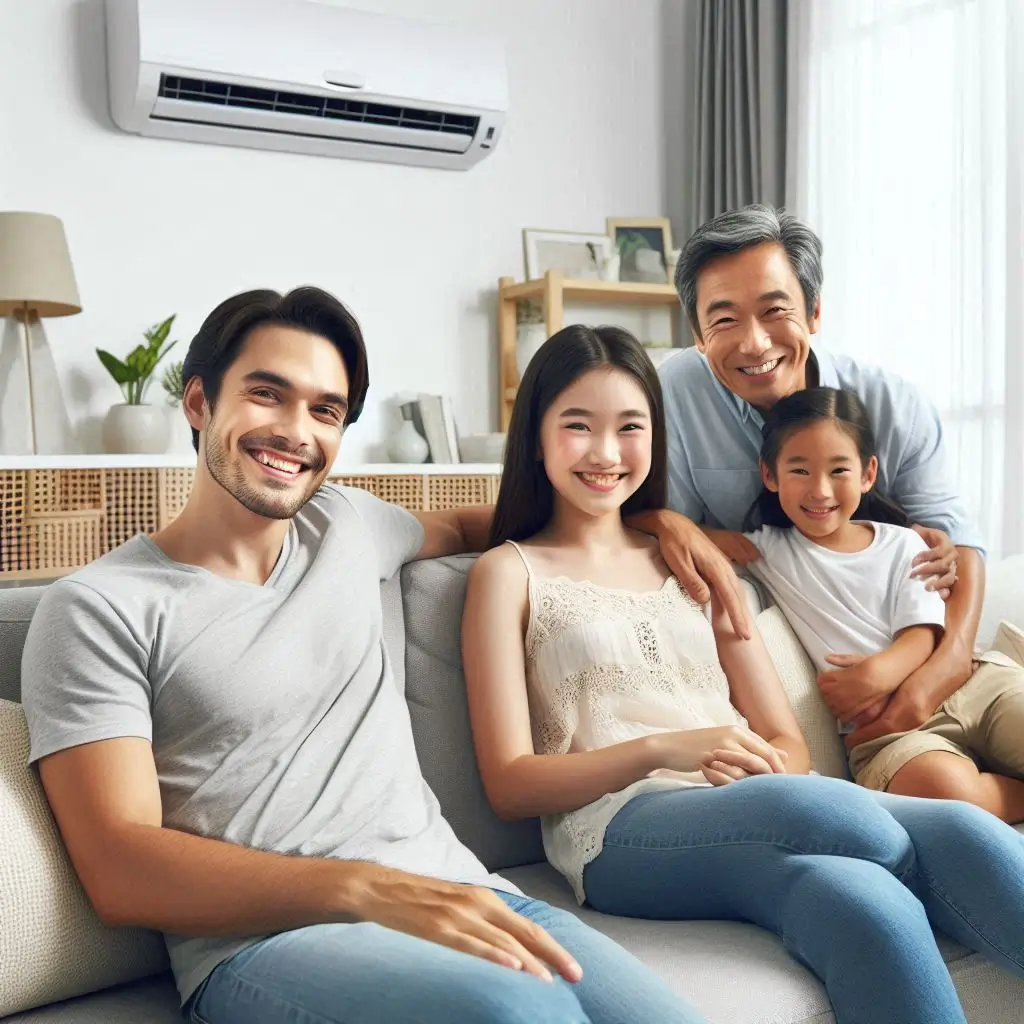
Finding the Best AC Installation Services in Your Area
When searching for “AC installation near me,” it’s essential to find a reliable and experienced HVAC professional who can handle the job efficiently. A well-installed air conditioning system ensures optimal cooling, energy efficiency, and longevity. This guide will help you navigate the process of selecting the best AC installation service in your area.
Factors to Consider When Hiring an HVAC Professional
Choosing the right HVAC professional is crucial for a successful AC installation. Below are key factors to consider before making a decision:
1. Experience and Certification
A certified and experienced HVAC technician ensures the installation is performed correctly. Look for:
- Licensing and certifications (e.g., NATE certification, EPA Section 608 certification).
- Years of experience in handling various AC systems.
- Expertise in installing specific brands and models.
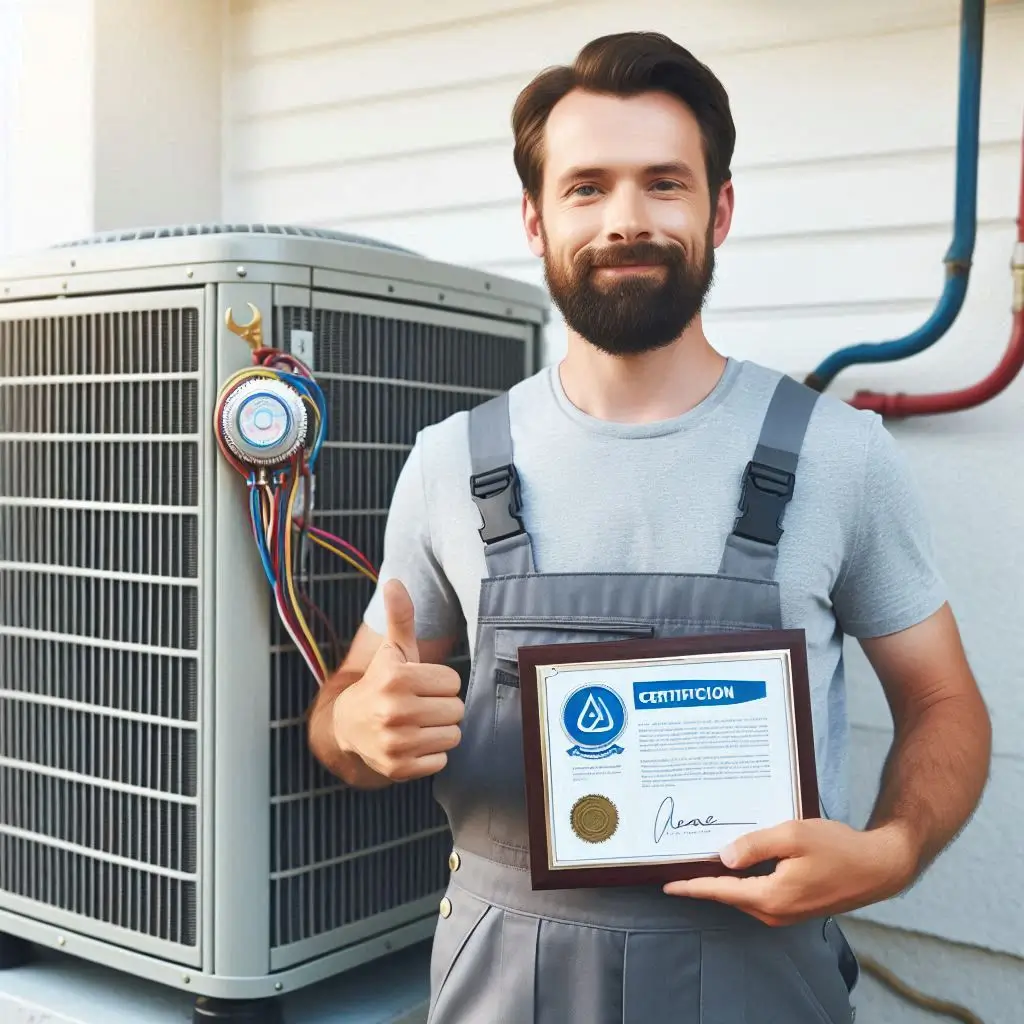
2. Reviews and Reputation
Customer reviews provide insight into the quality of service. When checking reviews:
- Look at Google, Yelp, and BBB ratings.
- Read customer feedback about professionalism, timeliness, and expertise.
- Avoid companies with frequent complaints about improper installation or poor customer service.
3. Pricing and Transparency
A reputable HVAC company provides clear pricing with no hidden charges.
- Request detailed quotes and compare them with competitors.
- Check if they offer warranties and maintenance plans.
- Avoid companies that provide extremely low estimates, as they may cut corners on installation quality.
4. Local Knowledge and Code Compliance
Every region has different building codes and regulations for AC installation. Local professionals:
- Understand climate conditions and recommend suitable AC units.
- Ensure the installation complies with local HVAC codes and safety regulations.
- Offer faster response times for emergencies and maintenance.
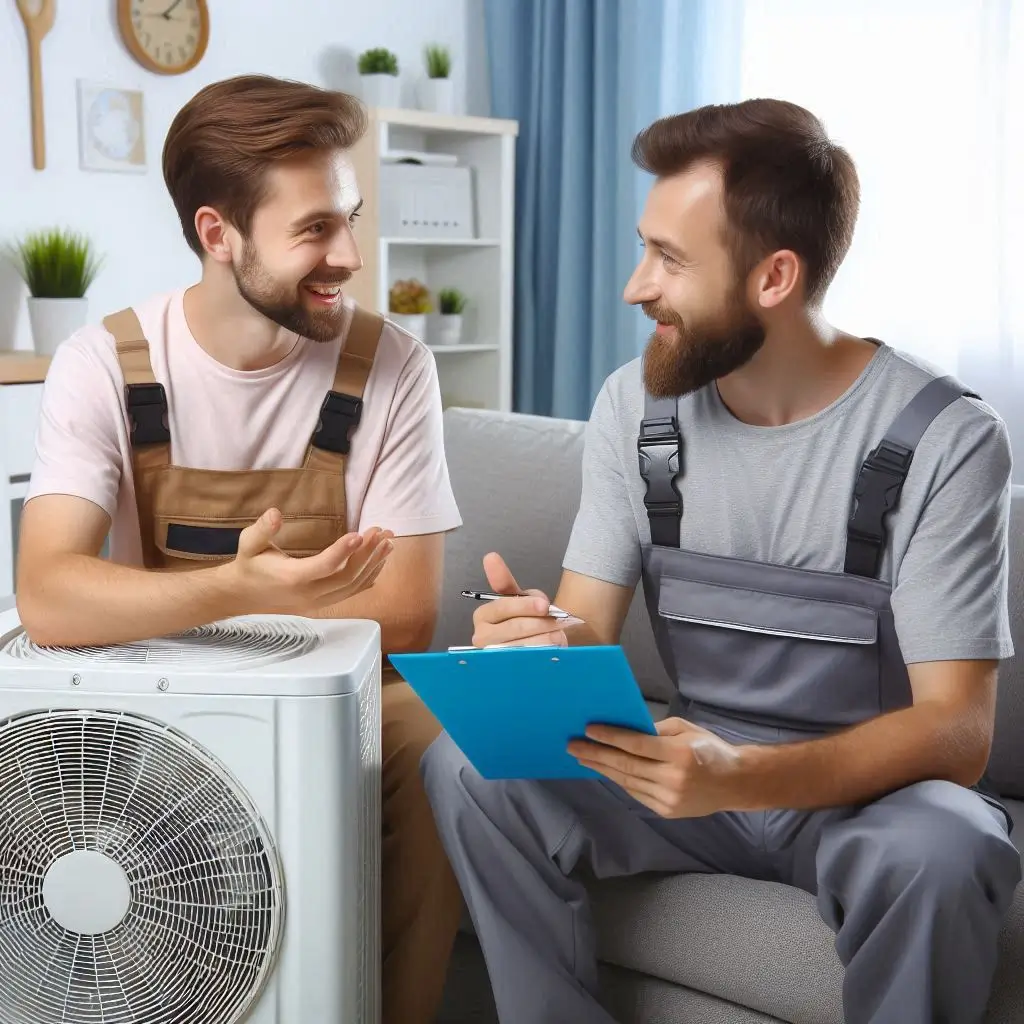
How to Compare Local AC Installation Companies
Once you’ve shortlisted potential HVAC companies, it’s essential to compare them to ensure you choose the best one for your needs.
1. Compare Service Offerings
Not all HVAC companies provide the same level of service. When comparing, check if they offer:
- Comprehensive AC installation (including ductwork, electrical work, and thermostat setup).
- Post-installation maintenance and repair services.
- Energy-efficient AC options to help lower utility bills.
2. Look at Warranty and Guarantees
A good warranty protects your investment. Check:
- Manufacturer warranties on the AC unit itself.
- Installation warranties covering labor and service.
- Whether they provide a money-back guarantee in case of installation issues.
3. Ask About Financing Options
AC installation can be expensive, so look for companies offering:
- Flexible financing plans with low interest.
- Rebates or discounts on energy-efficient models.
- Seasonal promotions that help reduce upfront costs.
4. Evaluate Customer Support
Reliable HVAC companies prioritize customer satisfaction. Test their:
- Response time for inquiries.
- Willingness to provide in-home consultations.
- Availability for emergency AC repair services.
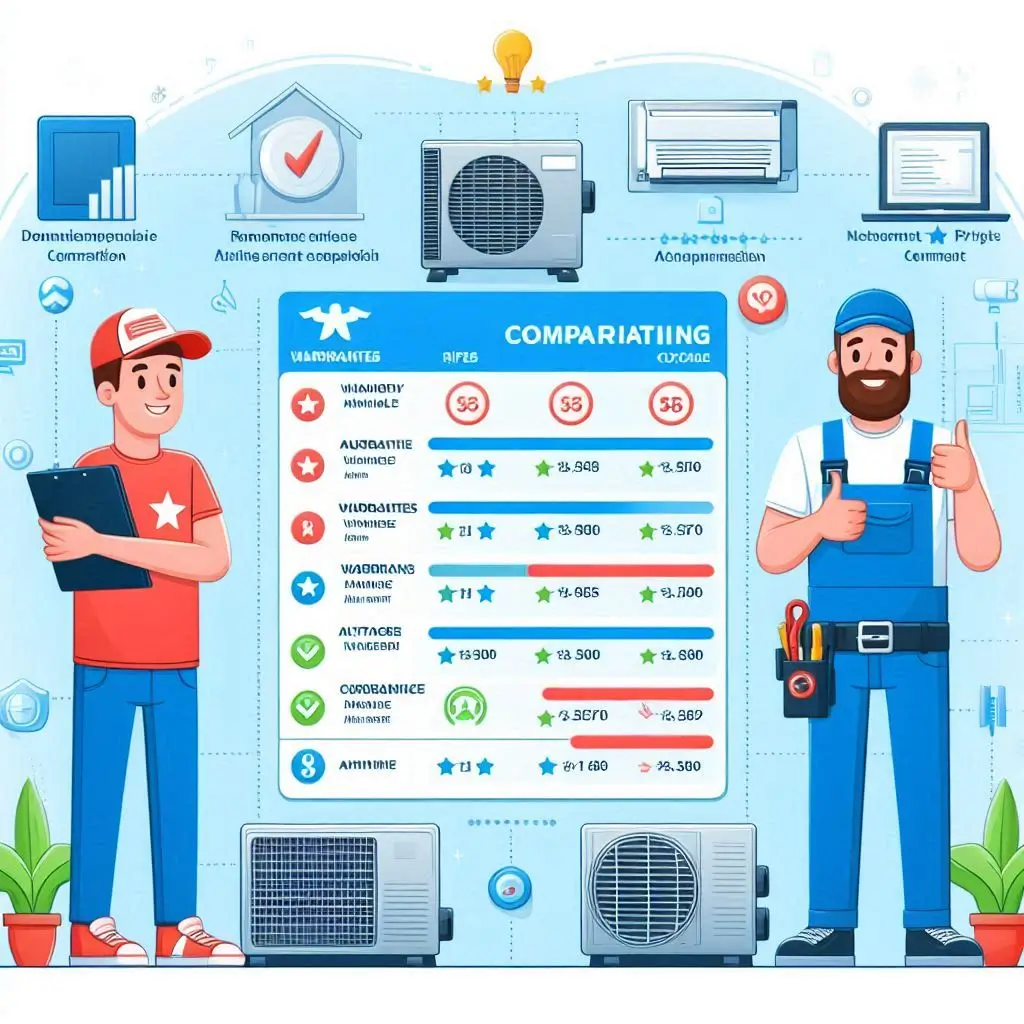
The AC Installation Process Explained
A properly installed air conditioning system ensures optimal cooling, energy efficiency, and long-term performance. Whether you’re installing a central AC, ductless mini-split, or window unit, understanding the process helps you make informed decisions.
This guide explains the AC installation process in detail, covering everything from the initial inspection to the final setup.
Initial Inspection and Load Calculation
Before the actual installation begins, HVAC professionals perform a thorough assessment of your home to determine the right AC unit size and placement.
1. Home Inspection and Ductwork Assessment
- The technician inspects your home’s insulation, windows, and existing ductwork (if applicable).
- Any leaks, blockages, or damages in the duct system are identified and repaired to ensure efficient airflow.
- If installing a ductless mini-split, they assess the best wall placement for optimal cooling distribution.
2. Load Calculation for Proper AC Sizing
Choosing the correct AC size is crucial. An undersized unit won’t cool efficiently, while an oversized unit will short-cycle, increasing energy costs.
HVAC professionals use the Manual J Load Calculation, which considers:
✔ Square footage of your home
✔ Number of rooms and occupants
✔ Local climate and sun exposure
✔ Insulation quality and ceiling height
Once the right BTU (British Thermal Unit) capacity is determined, they recommend the best energy-efficient AC model.
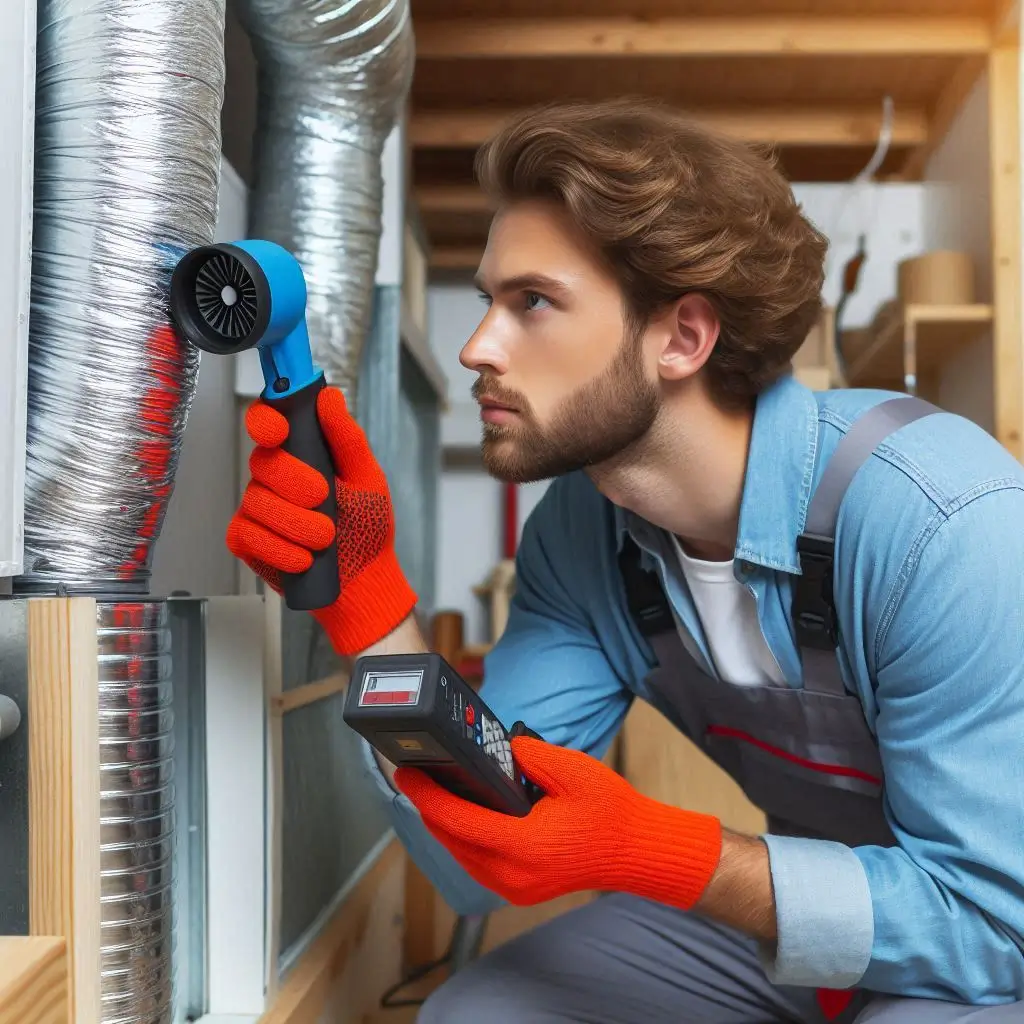
Installation Steps for Different AC Systems
The installation process varies depending on the type of air conditioner you choose. Below are the general steps for different AC systems.
1. Installing a Central Air Conditioning System
Step 1: Preparing the Area
- The technician clears debris and ensures proper ventilation around the outdoor condenser unit.
- If necessary, electrical wiring and circuit breakers are upgraded.
Step 2: Installing the Indoor and Outdoor Units
- The evaporator coil is placed inside the air handler or furnace.
- The outdoor condenser is mounted on a stable platform.
- Refrigerant lines are connected to allow heat exchange.
Step 3: Connecting the Thermostat and Testing
- The thermostat is wired to control temperature settings.
- The technician checks for leaks, refrigerant levels, and airflow before activating the system.
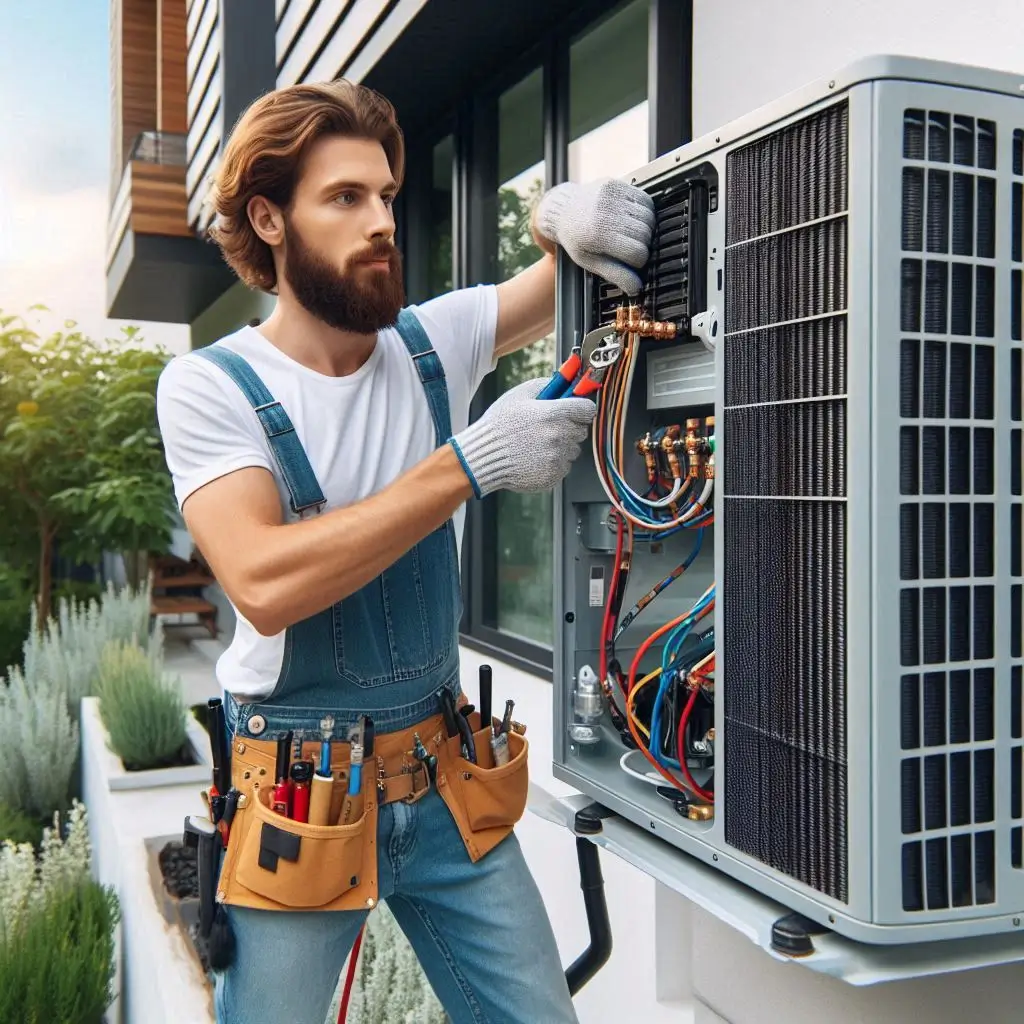
2. Installing a Ductless Mini-Split System
Step 1: Mounting the Indoor Unit
- The wall-mounted unit is installed at least 7 feet above the ground for optimal cooling.
- A small hole is drilled to pass refrigerant lines to the outdoor unit.
Step 2: Installing the Outdoor Compressor
- The outdoor unit is placed on a stable surface with enough clearance for airflow.
- Electrical connections and refrigerant lines are secured.
Step 3: Testing and System Startup
- The technician vacuum-seals the refrigerant lines to prevent leaks.
- After powering on, they adjust airflow settings for maximum efficiency.

3. Installing a Window or Portable AC Unit
- The window unit is fitted into a secure bracket with side panels to prevent air leaks.
- The portable AC is positioned near a window, with the exhaust hose properly vented.
- After installation, they seal any gaps and test cooling performance.
Cost of AC Installation Near Me
When searching for “AC installation near me,” one of the most important factors to consider is the cost. AC installation prices vary based on multiple factors, including the type of air conditioning system, home size, and labor costs.
Understanding what influences the cost and how to save money can help you make an informed decision while ensuring quality installation.
Factors Affecting AC Installation Costs
Several key factors impact the total cost of an AC installation. Here’s what you need to consider:
1. Type of Air Conditioning System
Different air conditioning systems come at different price points.
- Central AC Systems – Require ductwork and professional installation, making them more expensive than other options.
- Ductless Mini-Split Systems – Offer flexibility and energy efficiency but have a higher upfront cost per unit.
- Window & Portable AC Units – These are the most affordable options but are best suited for small spaces.
| AC Type | Average Cost (Including Installation) |
|---|---|
| Central AC | $3,500 – $7,500 |
| Ductless Mini-Split | $2,000 – $5,000 |
| Window Unit | $300 – $1,200 |
| Portable AC | $400 – $1,500 |
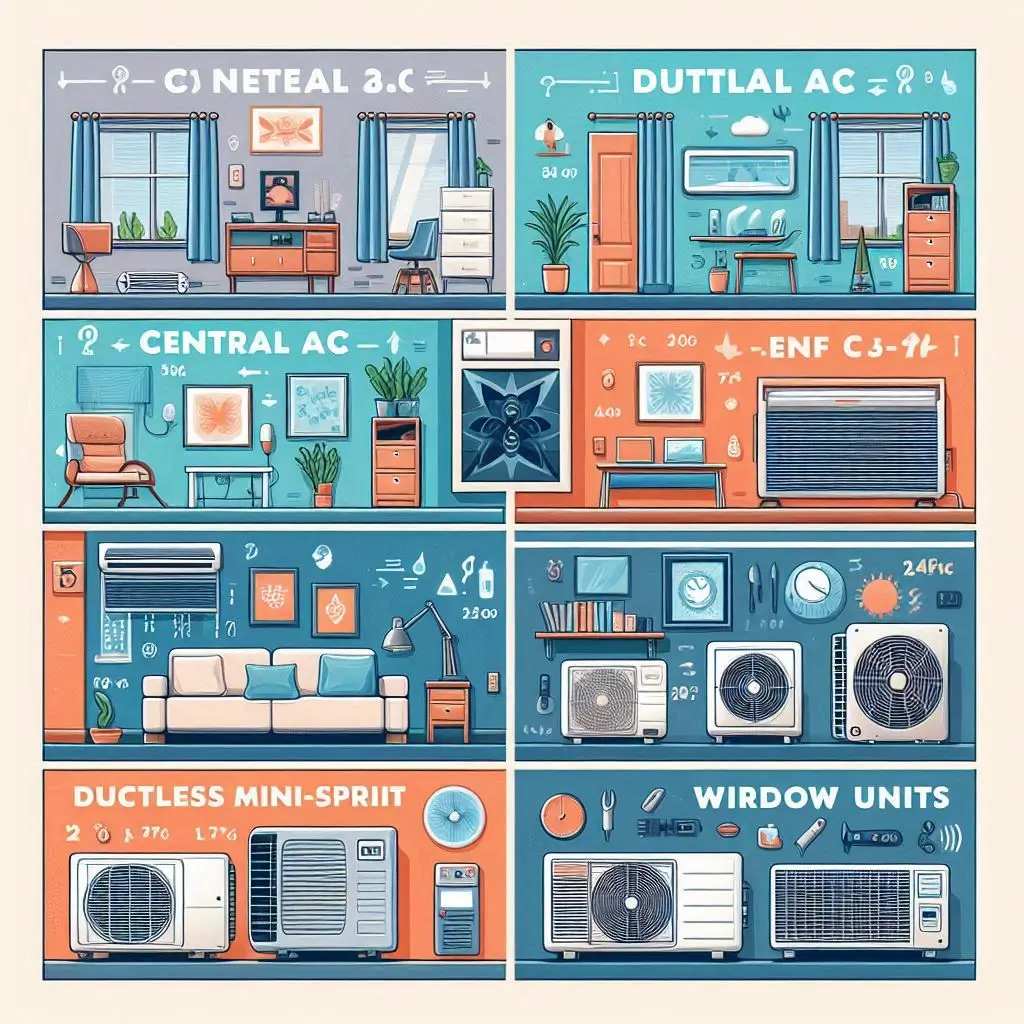
2. Home Size and Cooling Needs
The size of your home directly affects the AC unit size and installation cost. Larger homes need higher BTU-rated systems, increasing the total expense.
| Home Size (sq. ft.) | Recommended AC Size (BTU) | Estimated Cost |
|---|---|---|
| 600 – 1,000 | 12,000 – 18,000 BTU | $2,000 – $4,000 |
| 1,000 – 2,000 | 18,000 – 36,000 BTU | $3,500 – $6,500 |
| 2,000 – 3,000 | 36,000 – 60,000 BTU | $5,000 – $9,000 |
Proper load calculation ensures that you don’t install an oversized or undersized AC unit, which could lead to higher energy bills or inefficient cooling.
3. Labor and Installation Complexity
The installation process can also impact the total cost.
- Homes that require new ductwork will have higher installation costs.
- Complex installations, such as multi-zone mini-splits, take more time and expertise, increasing labor charges.
- The experience of the HVAC contractor also affects the price—licensed professionals may charge higher rates, but they ensure a quality job.
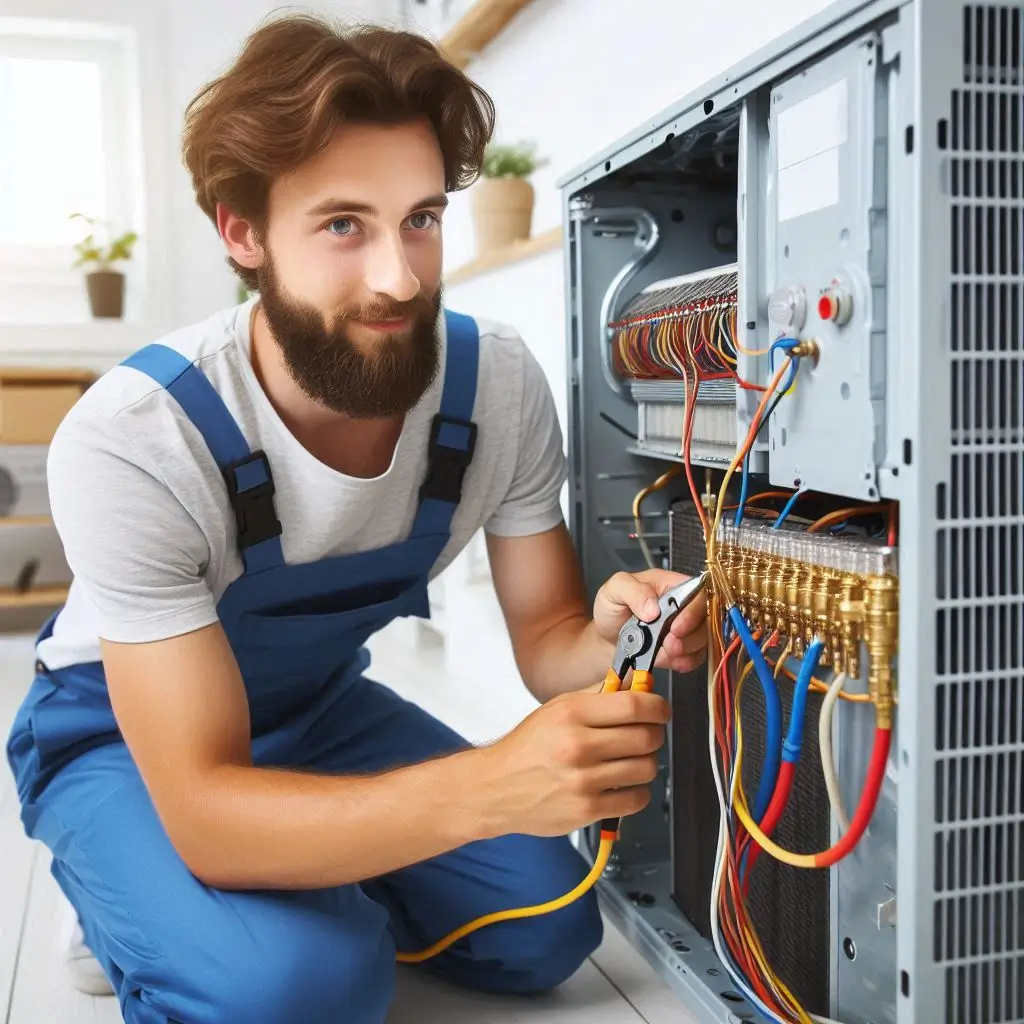
Ways to Save Money on Your Installation
Although AC installation can be expensive, there are ways to cut costs without sacrificing quality.
1. Look for HVAC Rebates and Tax Credits
Many utility companies and government programs offer rebates for purchasing energy-efficient air conditioners. Look for:
✔ Energy Star-certified AC units with rebates
✔ Federal tax credits for HVAC system upgrades
✔ State and local incentives for high-efficiency systems
2. Get Multiple Quotes
Instead of hiring the first HVAC company you find, compare at least three different estimates. This allows you to:
✔ Identify the best price for installation
✔ Understand the warranty and services included
✔ Avoid overpriced or unnecessary add-ons

3. Consider Off-Season Installation
The demand for AC installations peaks in summer, which leads to higher costs. If possible, schedule your installation during:
✔ Fall or winter, when HVAC companies offer discounts
✔ Early spring, before the summer rush starts
4. Invest in a Properly Sized Unit
Installing an oversized AC unit leads to higher upfront costs and inefficient cooling. Work with a trusted HVAC contractor to ensure you get the right-sized system for your home.
Benefits of Professional AC Installation
When searching for “AC installation near me,” one of the biggest decisions is whether to hire a professional HVAC technician or attempt a DIY installation. While a DIY approach may seem cost-effective, professional AC installation ensures long-term performance, energy efficiency, and system longevity.
In this article, we’ll explore the key benefits of hiring a professional HVAC contractor and why avoiding DIY mistakes can save you time and money.
Ensuring Energy Efficiency and Longevity
A properly installed air conditioning system improves energy efficiency, reduces energy bills, and extends the system’s lifespan. Here’s how professional installation helps achieve this:
1. Proper Sizing of the AC Unit
An oversized or undersized AC unit can lead to inefficient cooling, frequent breakdowns, and increased electricity consumption. HVAC professionals use load calculations to determine the right-sized system for your home based on:
✔ Square footage
✔ Insulation quality
✔ Number of windows and doors
✔ Local climate conditions
| Home Size (sq. ft.) | Recommended AC Capacity (BTU) |
|---|---|
| 600 – 1,000 | 12,000 – 18,000 BTU |
| 1,000 – 2,000 | 18,000 – 36,000 BTU |
| 2,000 – 3,000 | 36,000 – 60,000 BTU |
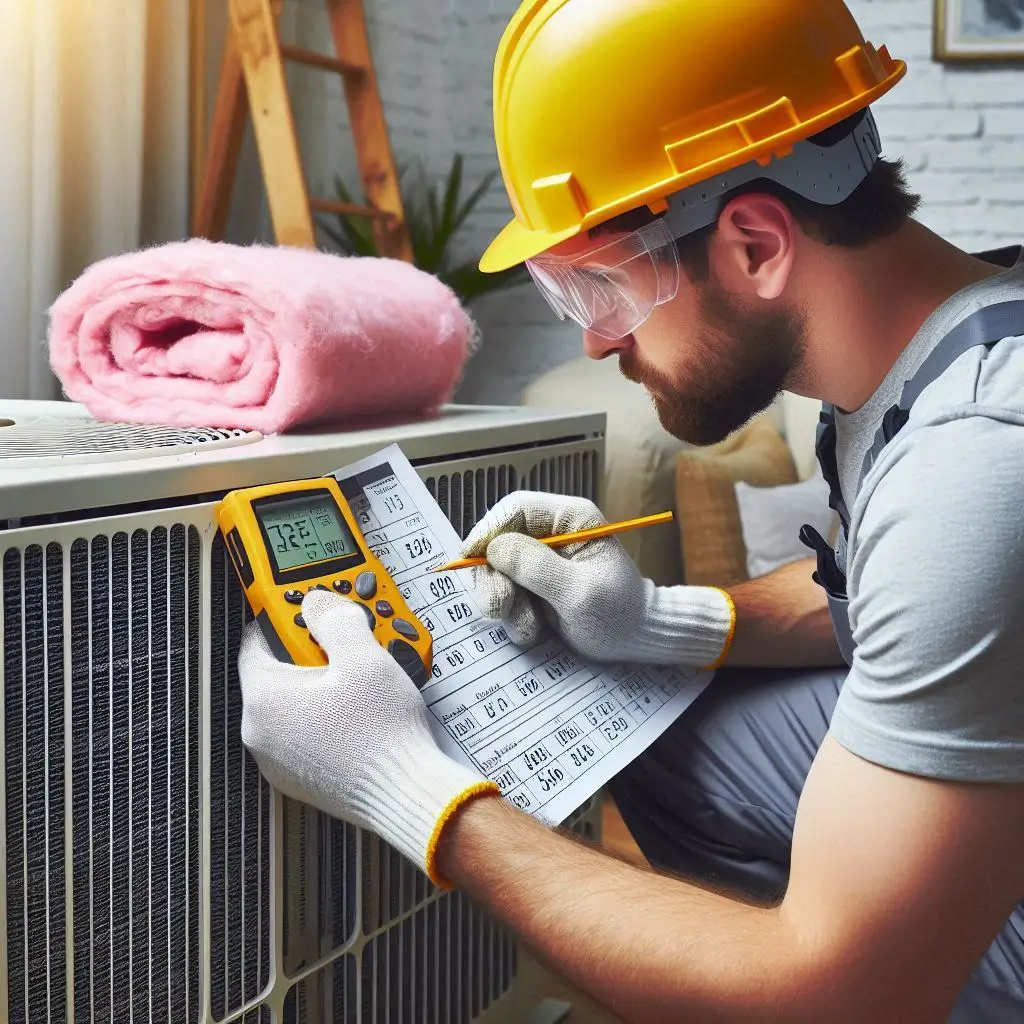
2. Correct Refrigerant Levels and Airflow
Professional HVAC installers ensure that your system is:
✔ Properly charged with the correct refrigerant levels
✔ Installed with optimal ductwork and airflow
✔ Free from leakages or blockages
This prevents energy waste, frozen coils, and compressor failure, all of which can result in expensive repairs or early system failure.
3. Maximized System Lifespan
A well-installed AC system can last 15-20 years with proper maintenance. Professionals:
✔ Securely install all components, electrical connections, and drain lines
✔ Test the system for smooth operation and efficiency
✔ Offer warranties, ensuring long-term performance and support
A poorly installed AC unit may last only 5-10 years, leading to premature replacement costs.
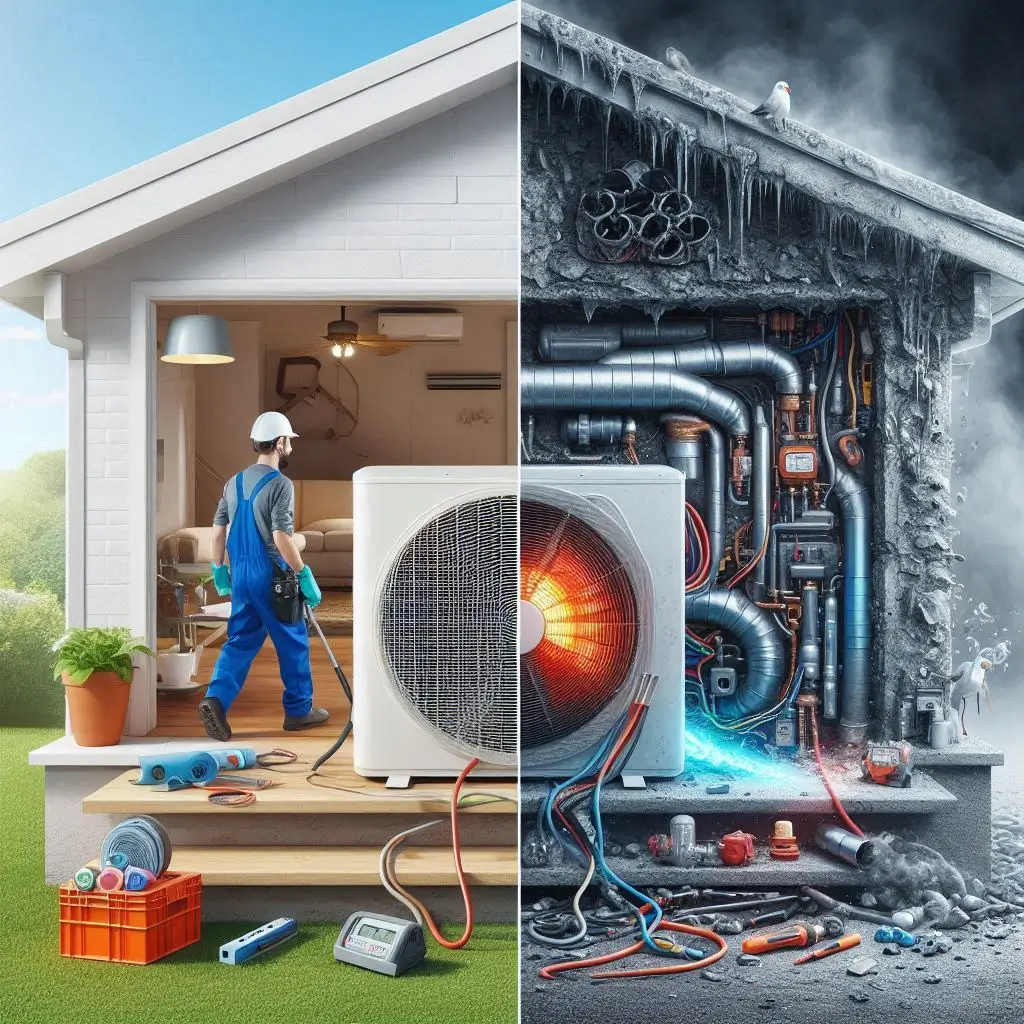
Common Mistakes to Avoid with DIY Installation
While installing an AC unit yourself may seem like a way to save money, common DIY mistakes can lead to poor performance, higher electricity bills, and costly repairs. Here are the biggest risks:
1. Incorrect Placement of the AC Unit
DIY installers often make mistakes like:
❌ Placing the outdoor condenser in direct sunlight, reducing efficiency
❌ Installing indoor units too close to ceilings or near heat sources
❌ Failing to provide proper clearance for airflow
These errors result in overworked compressors and inefficient cooling, leading to higher energy bills and faster wear and tear.
2. Poor Electrical Connections and Wiring
Incorrect wiring can:
❌ Cause short circuits and electrical hazards
❌ Reduce power efficiency, leading to increased energy consumption
❌ Void the manufacturer’s warranty
Professional HVAC technicians ensure safe and code-compliant electrical connections, preventing future failures and safety risks.

3. Leaking Refrigerant and Poor Insulation
Refrigerant leaks result in:
❌ Decreased cooling efficiency
❌ Increased energy costs
❌ Potential health risks from exposure to refrigerants
Professional installation prevents leaks by properly sealing refrigerant lines, insulating ducts, and securing connections.
How to Maintain Your Newly Installed AC System
After investing in a new AC installation, proper maintenance is crucial to keep it running efficiently, lower energy costs, and extend its lifespan. Neglecting regular upkeep can lead to higher electricity bills, reduced cooling performance, and costly repairs.
In this guide, we’ll cover routine maintenance tips to maximize your AC’s efficiency and discuss when to call for professional servicing to prevent breakdowns.
Routine Maintenance Tips for Optimal Performance
To ensure consistent cooling and longevity, follow these maintenance steps:
1. Clean or Replace Air Filters Regularly
✔ Dirty air filters restrict airflow, making your AC work harder and increasing energy consumption.
✔ Clogged filters can cause ice buildup on the coils, reducing efficiency.
✔ Change or clean filters every 1-3 months, especially during peak summer months.
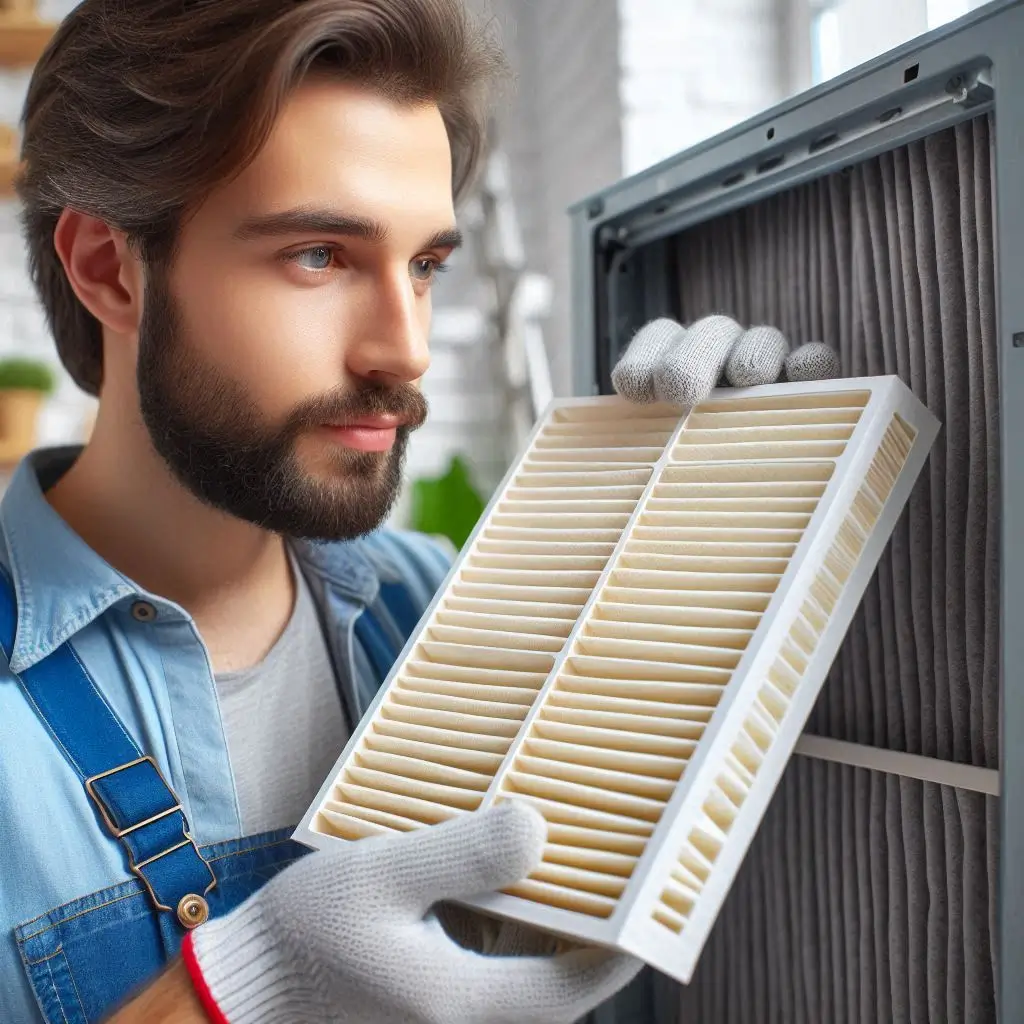
2. Keep the Outdoor Condenser Unit Clean
✔ Dust, dirt, and debris can clog the condenser coils, reducing heat dissipation.
✔ Regularly remove leaves, dirt, and grass clippings from around the unit.
✔ Maintain at least 2 feet of clearance around the unit for proper airflow.
How to Clean the Condenser:
✔ Turn off the power supply.
✔ Use a soft brush or vacuum to remove debris.
✔ Rinse the coils gently with a garden hose (low pressure).
3. Check and Clean Evaporator Coils
✔ Over time, evaporator coils collect dust, which reduces cooling efficiency.
✔ Clean the coils once a year using a soft brush or coil cleaner.
💡 Tip: Use coil cleaning spray to dissolve dirt without damaging the coils.
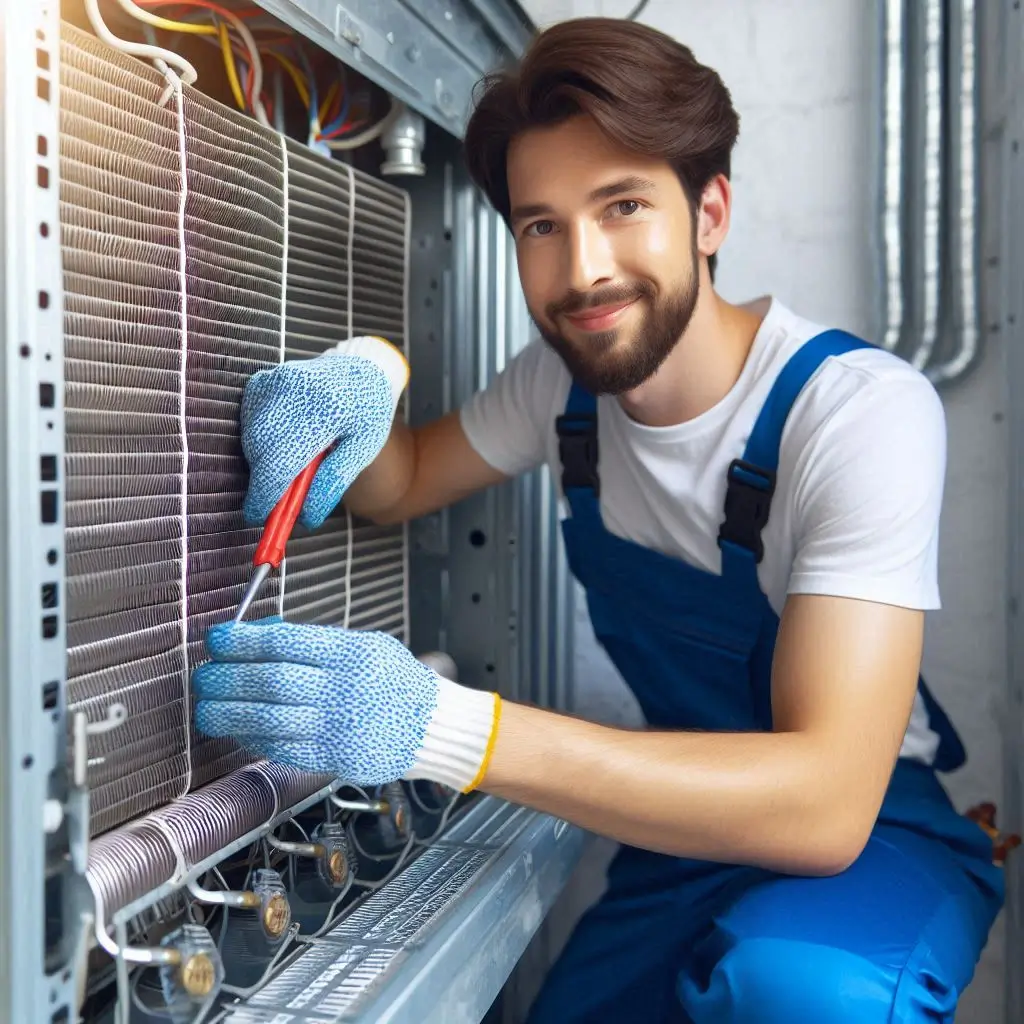
4. Inspect and Clean Air Ducts and Vents
✔ Blocked or dirty ducts restrict airflow, making the system work harder.
✔ Regularly vacuum air vents and check for dust buildup inside ducts.
✔ If you notice uneven cooling or high energy bills, schedule professional duct cleaning.
5. Monitor Refrigerant Levels
✔ Low refrigerant can cause poor cooling and compressor damage.
✔ If you notice warm air blowing, hissing sounds, or ice on coils, your AC may have a leak.
✔ Call an HVAC technician to check and refill refrigerant levels.
6. Program Your Thermostat Efficiently
✔ Set your thermostat to 78°F (26°C) in summer for optimal efficiency.
✔ Use a programmable thermostat to reduce energy consumption when you’re away.
✔ Avoid frequently changing settings, as this strains the system.

When to Call for AC Repair or Servicing
Even with regular maintenance, AC systems may develop issues over time. Here’s when to call an HVAC professional:
1. Unusual Noises or Vibrations
❌ Banging or rattling – Loose parts inside the unit.
❌ Hissing sounds – Possible refrigerant leak.
❌ Buzzing or clicking – Electrical component issues.
2. Weak Airflow or Uneven Cooling
✔ If certain rooms are hotter than others, check for duct obstructions or compressor issues.
✔ Weak airflow may indicate a dirty air filter or malfunctioning blower motor.
💡 Solution: If air filters and vents are clear, call a technician for further inspection.
3. Frequent Cycling or Short Cycling
✔ If your AC turns on and off frequently, it may be due to:
❌ A thermostat issue
❌ Improper unit size for your home
❌ Dirty condenser coils causing overheating
4. High Energy Bills
✔ If your electricity bill suddenly increases, your AC may be:
❌ Overworking due to dirty components
❌ Leaking refrigerant, causing poor cooling efficiency
❌ Experiencing wear and tear on parts
5. Moisture or Leaks Around the Unit
✔ Water leaks can indicate a clogged drain line or frozen coils.
✔ Refrigerant leaks can be dangerous and require immediate attention.
💡 Solution: If you notice any leaks, turn off the unit and call an HVAC expert.
Frequently Asked Questions About AC Installation Near Me
When searching for AC installation near me, homeowners often have questions regarding cost, time, and efficiency. Below are answers to some of the most common questions to help you make an informed decision.
Q: How long does it take to install a new air conditioner?
The installation time depends on the type of AC system and the complexity of the setup. On average, a residential AC installation takes between 4 to 8 hours. Factors that influence installation time include:
- Type of system: Central air conditioning systems take longer to install than ductless mini-splits.
- Existing ductwork condition: If the ducts need repairs or modifications, installation time may increase.
- Home layout: Larger homes or homes with complex layouts may require additional setup time.
- Permit and inspection requirements: Some areas require inspections or permits that could extend the timeline.
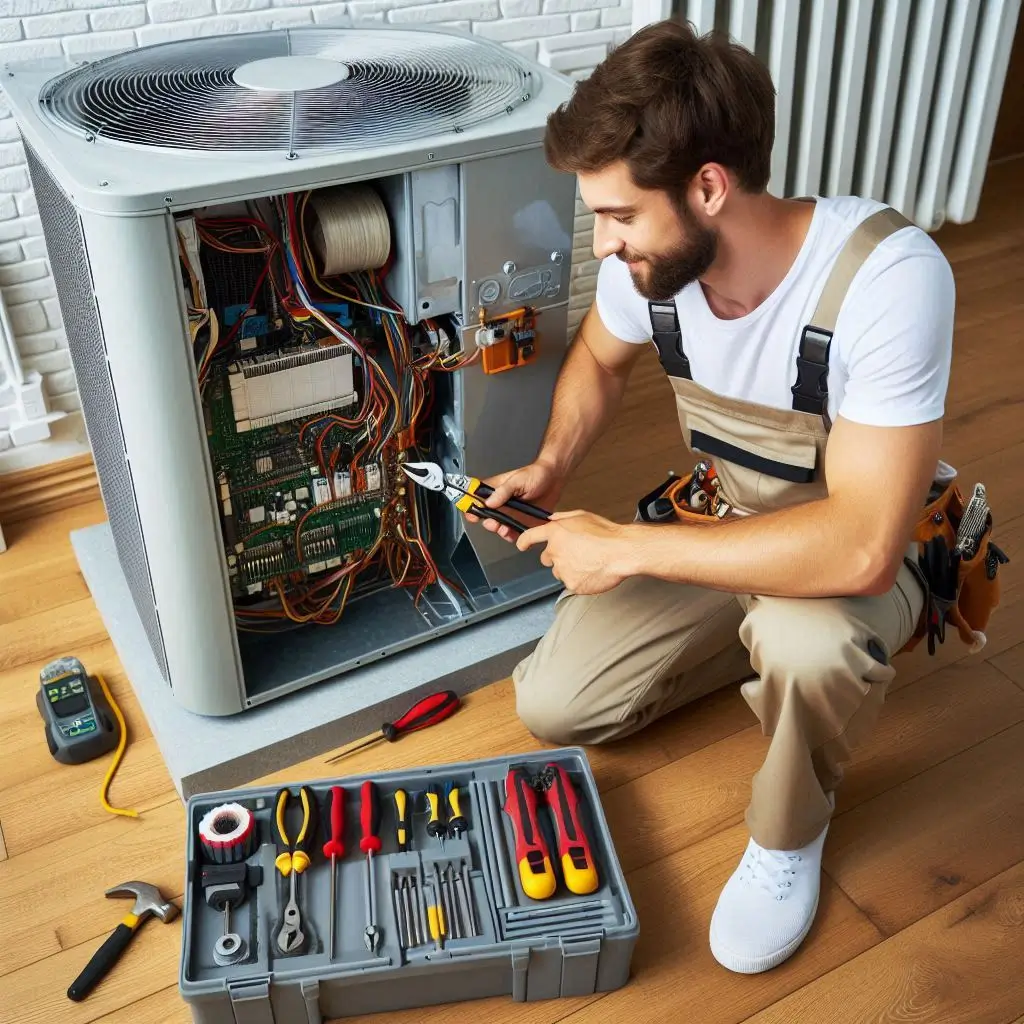
Q: What size AC unit do I need for my home?
Choosing the right AC size is crucial for efficiency and performance. An undersized unit will struggle to cool your home, while an oversized one will lead to higher energy bills and shorter lifespan due to frequent cycling.
A professional HVAC technician performs a load calculation based on factors like:
- Square footage of your home
- Number of windows and insulation quality
- Climate and local weather conditions
- Number of occupants and appliances generating heat
For example, a 1,500 sq. ft. home typically needs a 2.5-ton AC unit, but only a professional can accurately determine the correct size.

Q: How much does AC installation typically cost?
The cost of AC installation near me varies based on multiple factors, but on average, it ranges between $3,000 and $7,000. Factors affecting the price include:
- Type of AC system: Central AC is more expensive than window or ductless mini-split systems.
- Installation complexity: Homes that require new ductwork or electrical modifications will have higher costs.
- Brand and efficiency rating: Higher SEER-rated systems cost more upfront but offer long-term energy savings.
- Labor and location: Costs differ depending on your local market and contractor rates.
Getting multiple quotes from licensed HVAC contractors ensures you receive the best price for your AC installation.

Q: Can I install an AC unit myself?
While some homeowners consider DIY AC installation, it is not recommended due to the risks involved. Improper installation can lead to:
- Reduced efficiency and performance
- Voided manufacturer warranties
- Electrical and refrigerant handling hazards
- Failure to meet local building codes
Hiring a licensed HVAC professional ensures the AC system is installed safely, efficiently, and in compliance with local regulations. This not only enhances cooling performance but also extends the lifespan of your system.
Conclusion
Investing in professional AC installation near me ensures your home stays comfortable, energy-efficient, and free from costly repairs. By understanding the installation process, costs, system types, and maintenance tips, you can make an informed decision that benefits your home in the long run. Choosing a licensed HVAC expert guarantees proper sizing, compliance with local codes, and optimal system performance. Whether upgrading an old unit or installing a brand-new system, working with trusted AC installation professionals will maximize efficiency, extend system lifespan, and provide peace of mind. To get started, compare local HVAC contractors, request quotes, and schedule a professional installation that meets your home’s cooling needs.

